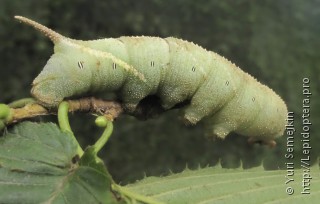Photo #10217: Sphingidae sp.
Larva

Click image to enlarge
Base gallery.
Photo, and identified by: Yuri Semejkin. Image redone at the website
Date and time, location shooting/catching: 2011-08-06 00:00:00, Near Vladivostok
Photographer's comment: A Sphingidae caterpillar?Comments on this image
Your comment
Please, create an account or log in to add comments.
Other photos Sphingidae sp.






All large size images of Sphingidae sp. on one page
Please, create an account or log in to upload your photo
News
- 02.03.2025: Moscow Insect Fair: New section on the Insecta.pro Website
- 31.12.2024: If you need to upload a lot of photos to Insecta.pro website
- 10.12.2024: Новое поле в «Поиске энтомологов»
New photos (29.03.2025)
Fresh from the community
- 23:09, M. Niobius: Здравствуйте. Тульская область, окт...
- 12:52, L. Bolshakov: Петр, см. там подробности: https://...
- 12:32, P. Khramov: Лавр, источник скиньте, пожалуйста....
Popular insects
Recommended blog topics
- ICZN Election of Commissioners
- The insects exhibition in Kotlas
- The petition in defense of biological nomenclature
- “Demons and Butterflies—Weather predictability and predictions” by Richard A. Anthes on February 21st, Albuquerque












